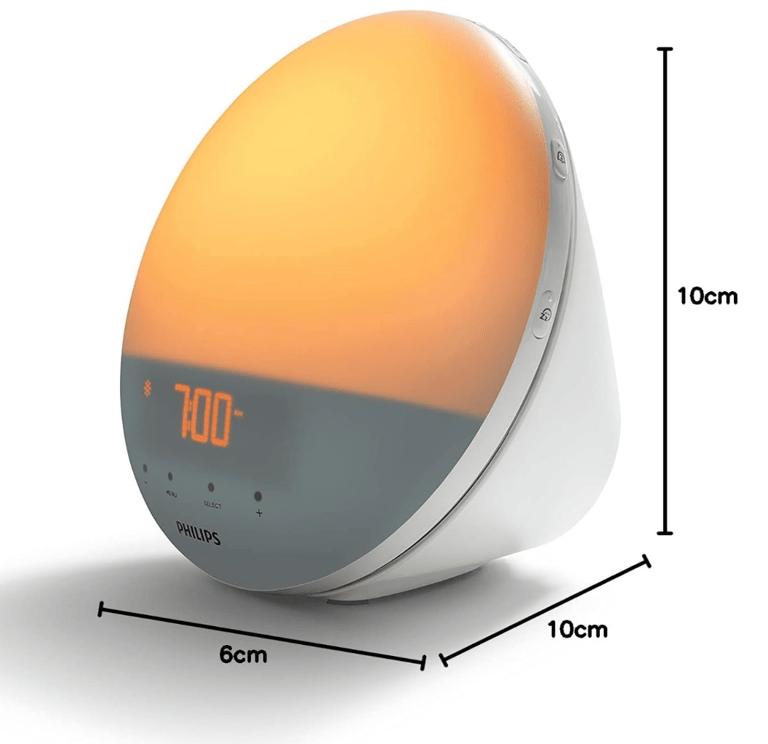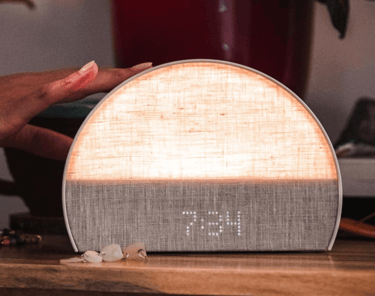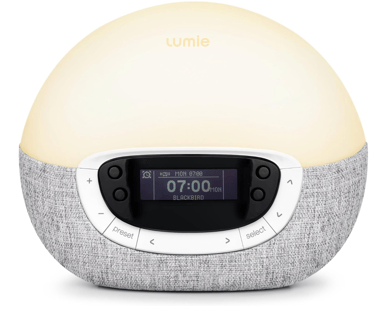
Our Top 3:
Smart lights systems
Why Light-Based Alarms Work Better for Your Body
Smart wake-up lights work with your body's natural circadian rhythm to create a gentler, more effective morning routine. When these devices begin their sunrise simulation 20-30 minutes before your wake time, they trigger a cascade of biological responses that traditional alarms can't match. The gradual light exposure naturally suppresses melatonin while increasing cortisol and body temperature – the same process that happens when you wake up with natural sunlight. This means you're already partially awake by the time your alarm sounds, making it easier to get out of bed and feel alert within minutes rather than hours.
The benefits extend beyond just easier mornings. People who use wake-up lights report better mood throughout the day, particularly during winter months when natural light is limited. Studies have shown improvements in seasonal affective disorder symptoms, with users experiencing more stable energy levels and reduced reliance on caffeine. For shift workers, parents with early-rising children, or anyone whose schedule doesn't align with sunrise, these devices provide the light cues your brain needs to maintain a healthy sleep-wake cycle. Many users also find the sunset simulation feature helps them wind down naturally in the evening, creating bookends of light therapy that improve both sleep quality and morning alertness.
How Wake-Up Light Technology Works
Modern wake-up lights use LED technology to produce a gradual sunrise simulation that begins before your set wake time. The light starts as a soft red glow (which doesn't disrupt melatonin production) and slowly transitions through orange and yellow to bright white light, mimicking the natural color temperature changes of dawn. This progressive illumination triggers your circadian rhythm, suppressing melatonin and increasing cortisol naturally – the way your body is designed to wake up. Many devices also include sunset simulation for evening, helping you wind down by reversing the process.
Below are three wake-up lights that consistently deliver on their promise of better mornings, each offering different features to match your needs and budget.
How Gradual Wake Technology Improves Your Mornings


Why you should try this device
Philips has the most clinical research backing their wake-up lights, with studies showing users fall asleep faster, wake more refreshed, and experience improved morning energy levels. The light quality is exceptional – the LEDs produce a natural color progression that genuinely mimics sunrise rather than just getting brighter. The tap-to-snooze feature and reading light function make it practical beyond just wake-up duties. The Connected model's environmental monitoring helps you understand what's affecting your sleep quality beyond just your wake routine.
What we think about this
This is the wake-up light that all others are measured against. The build quality feels premium, the light diffusion is even without hot spots, and the interface is intuitive even when you're half-asleep. Users consistently report feeling more naturally awake within 2-3 weeks of use. The standard HF3520 provides everything most people need – the Connected version's extra $60 mainly gets you app control and room monitoring that's interesting but not essential. Some users wish the speaker quality was better for music, but the nature sounds are pleasant enough. At this price point, it's an investment in better mornings that actually delivers.
What it is
Philips pioneered the wake-up light category and offers two main models. The HF3520 provides core sunrise/sunset simulation with 5 wake-up sounds and FM radio. The Connected HF3670 adds WiFi connectivity, sleep environment monitoring (temperature, noise, humidity), and personalized sleep/wake programs through the SleepMapper app. Both feature 20 brightness settings and clinically proven light therapy that starts 20-40 minutes before your alarm time.
1. Philips SmartSleep Wake-Up Light


Why you should try this device
The Restore 2 excels at being an all-in-one sleep solution. Unlike traditional wake-up lights, it addresses your entire sleep cycle – helping you wind down with evening meditations, maintain sleep with white noise, and wake naturally with sunrise simulation. The content library (requires subscription after trial) includes sleep stories and breathing exercises that many find more effective than standalone meditation apps. The ability to create different routines for weekdays versus weekends, all controlled from your phone, makes it incredibly practical for real life.
What we think about this
Hatch has created something that feels modern and thoughtful. The minimalist design looks good on any nightstand, and the touch controls on top are responsive. The sunrise simulation isn't quite as refined as Philips – the color transitions feel slightly more abrupt – but it's still effective. What sets it apart is the ecosystem approach: the combination of light, sound, and content makes it easier to maintain a complete sleep routine. The subscription ($4.99/month after free trial) for premium content might annoy some, but the free sounds and basic features work fine without it. If you want one device to handle everything sleep-related, this is your best bet.
What it is
Hatch Restore 2 combines a wake-up light with a sound machine, meditation content, and sleep stories in one bedside device. It offers customizable sunrise alarms, a library of sleep sounds and white noise, guided meditations, and a soft-glow reading light. The device is controlled entirely through the Hatch app, allowing you to create multiple sleep/wake routines and adjust settings without getting out of bed.
2. Hatch Restore 2
Why you should try this device
The Shine 300's standout feature is its flexibility – you can customize your sunrise and sunset duration to match your personal preferences, from a quick 15-minute wake-up to a leisurely 90-minute wind-down. The warm LED lighting is easier on the eyes than harsh white light, particularly important for evening use. As a Medical Device Class I certified in Europe, it has clinical credibility for treating seasonal affective disorder. The mixed light and sound combinations let you find the perfect wake-up formula, whether that's birdsong with sunrise or radio with gradual light.
What we think about this
Lumie brings 30 years of light therapy expertise to this device, and it shows in the quality of the light transitions. The Shine 300 offers more features than basic models while remaining straightforward to use – no app required, just simple button controls. Users particularly appreciate the customizable duration settings and the quality of the warm LED light that feels more natural than cheaper alternatives. The build quality is solid, and the backup battery ensures your settings are saved during power outages. At $159, it sits perfectly between basic wake-up lights and premium smart models, offering excellent value for those who want proven light therapy without unnecessary tech complexity.
What it is
The Lumie Bodyclock Shine 300 is a comprehensive sunrise and sunset alarm clock that offers customizable light duration from 15 to 90 minutes. This UK-designed device features warm LED lights that gradually brighten for waking and dim for sleep, along with 15 wake-up sounds including white noise and nature sounds. It also functions as a bedside reading lamp with adjustable brightness and includes an FM radio with the ability to set radio as your wake-up alarm.
3. Lumie Bodyclock Shine 300


